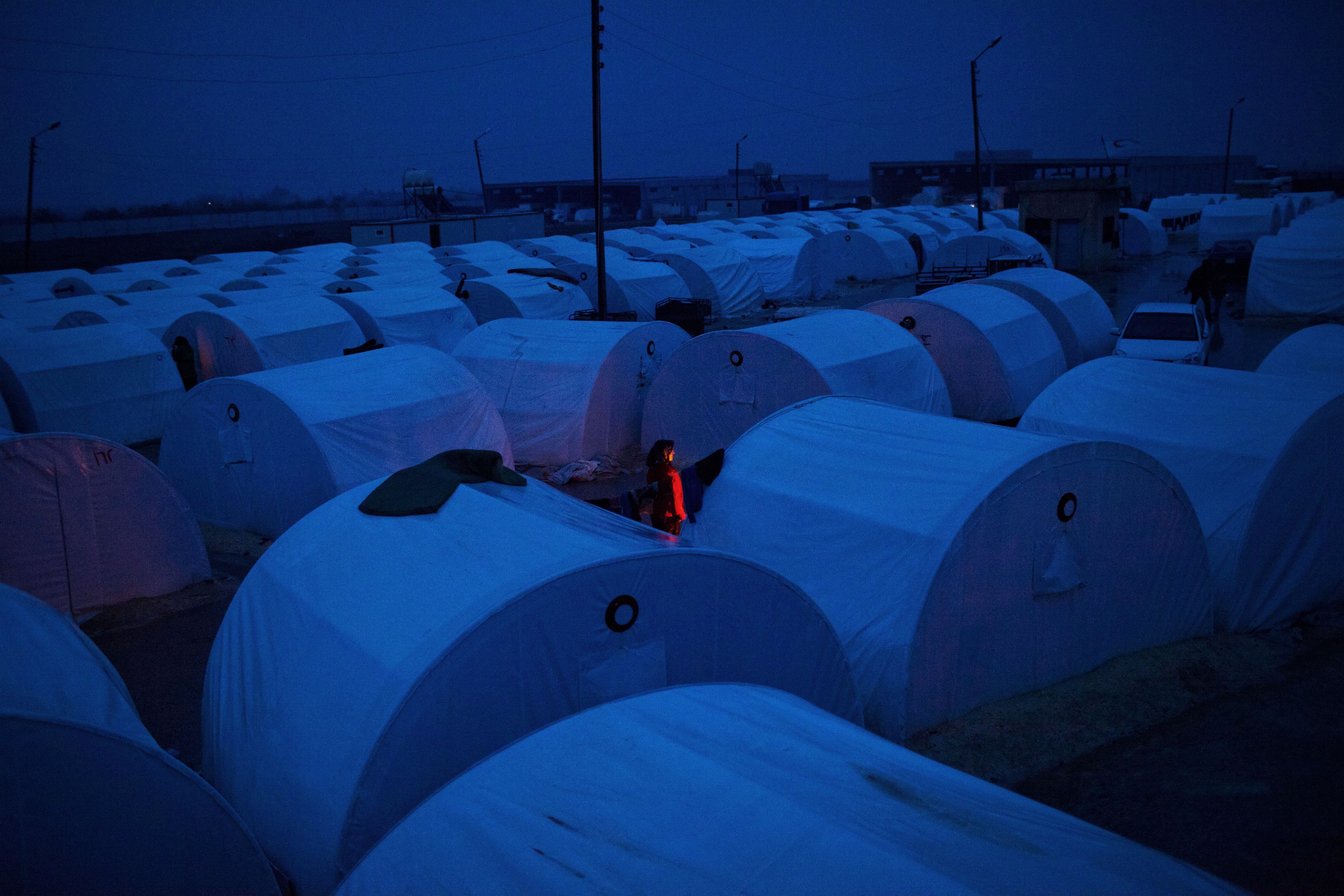The Pentagon has more questions than answers about President Donald Trump's plan to establish "safe zones" inside Syria and surrounding countries for potentially millions of refugees uprooted by the endless bloodshed there, an initiative that could require the deployment of tens of thousands of U.S. military personnel.
The draft executive order, a document published online Wednesday after it was obtained by numerous media outlets, appears to have caught military leaders by surprise. If executed, it would require the Defense Department and State Department to develop a strategy — within 90 days — for establishing and protecting what could amount to several refugee camps.
Publicly, defense officials have been reluctant to discuss the president's initiative, saying Thursday the matter remains "pre-decisional" and that Defense Secretary Jim Mattis so far has received no firm direction from the White House. Navy Capt. Jeff Davis, a Pentagon spokesman, indicated that while Mattis was aware of the draft documents, he has made no immediate movement on them.
"Let’s give him a chance to see what is even in them," Davis said. "... Let's give this a chance to develop, and we'll see what the guidance is, and we'll carry out the guidance."
But privately, some Defense Department officials are using words like "ambiguous" to describe Trump's plan, questioning whether the new administration envisions building secure camps for Syrian refugees, establishing no-fly zones — or both. Trump's predecessor, Barack Obama, walked away from the thought of establishing safe zones after his top military advisers estimated that doing so could require a commitment of up to 30,000 U.S. troops.
There are about 500 American troops on the ground now in Syria, mostly special operations personnel coordinating airstrikes, and advising local militias and Turkish military forces battling the Islamic State.
Trump is scheduled to visit the Pentagon on Friday for a meeting with Mattis and other top military officials. They are expected to discuss options for bringing more force to bear on the Islamic State, both in Syria and in Iraq.
The challenges in Syria are far more complex than those presented by ISIS. The country's six-year-old civil war is in the midst of a tenuous cease fire. And the presence of more U.S. troops, whether to wage war or protect refugees, heightens the risk of a confrontation with entities loyal to Syrian President Bashar al-Assad and the unpredictable Russian military forces supporting them.
That concern, perhaps above all, is feeding the Pentagon's skepticism. What specific territory would U.S. troops be asked to secure? From whom would they be protecting the refugees? How does Trump even define protection? Should American commanders tasked with securing these safe zones be prepared to intercept or shoot down any Russian or Syrian aircraft that breach such these safe zones?

A Syrian woman stands near fire to warm herself at a refugee camp in Azaz, Syria, in 2012.
Photo Credit: Manu Brabo/AP
The military is leery, too, of being tasked with trying to restore civil order and basic human services in Syria, large areas of which have been ravaged by the civil war and the mayhem caused by ISIS. "DoD itself is not in the business of building infrastructure in Syria," a defense official told Military Times on the condition of anonymity. "We had some of that with civil engineers in Iraq and Afghanistan, but this is not the same war."
It's true that during the height of those campaigns, the U.S. military, while seeking to "win hearts and minds," dedicated significant resources to rebuilding roadways, bridges and other important public works with the goal of jump starting governance and economic activity. But such ventures proved costly, in money spent and lives lost, as many hard-fought gains vanished once U.S. forces withdrew from those communities.
Military officials are conscious of such recent history as discussions turn once more to the refugee crisis in Syria. In the areas that have been liberated from the Islamic State, it's America's allies who are rebuilding communities, clearing mines and improvised explosives "so civilians can return to their homes," the official said. U.S. military commanders in the region continue to enable those groups, and there's a strong sense at the Pentagon that this work must remain the near-term focus.
"Nobody can feel safe under their rule, and people certainly cannot move forward toward rebuilding until they are gone," the defense official said. "... ISIL's defeat is critical to creating safe space" in Syria. "That's how they're going to get the traction required to bring their economy back again. That's how they will grow stability. We have to kill ISIL before people can feel safe and secure."
ISIL is another name for the Islamic State.
Retired Gen. Barry McCaffrey, whose 32-year Army career included high-profile roles in the Pentagon and with NATO, called Trump's agenda an "unexamined impulsive thought." McCaffrey, who served in President Bill Clinton's administration as drug czar, is a decorated Vietnam combat veteran. He has faulted the new president for being unfamiliar with foreign policy and military affairs.
The enormous cost of deploying large numbers of American troops should be one deterrent, McCaffrey said, noting the $11 billion average monthly expense required to sustain operations during the Iraq war's peak. There also is likely to be considerable opposition among other governments in the region, starting with Assad's, and equally strong pushback here at home.
"I would predict," McCaffrey added, "there will be zero support for this concept in the Pentagon and Congress."
Andrew deGrandpre is Military Times' senior editor and Pentagon bureau chief. On Twitter: @adegrandpre.





